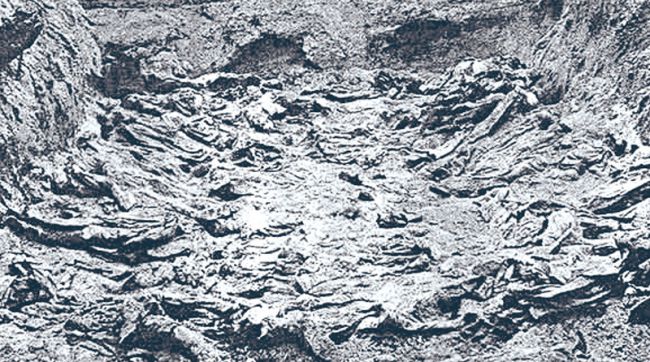Eighty one years ago, on March 5, 1940 the Political Office of KC WKP(b) made a decision to exetute Polish prisoners of War (POWs) located in camps throughout the regions of Kozielsk, Starobielsk and Ostaszkowo along with prisoners held by NKWD on the prewar eastern Polish soil.
As the result of Russian aggression against Poland on September 17th, 1939, Russians detained over 450 thousand Polish soldiers part of which were released immediately, specifically national minorities. On September 19th, 1939, Lawrientij Beria created a POW Management Office as part of NKWD and directed creation of a network of POW camps.
At the beginning of October 1939, Soviet officials decided to release POWs of the lowest rank. At the same time a decision was made to create two „officer’s camps” in Starobielsk and Kozielsk and one in Ostaszkowo, designated for members of police, KOP and prisons.
By the end of February 1940, there were 6,192 police officers and members of the above mentioned groups and 8,376 military officers. Among the prisoners, there was a large group of reservists that was called upon when the war erupted. The vast majority were part of the Polish intelligentsia; doctors, lawyers, teachers, professors, engineers, writers, journalists, Orthodox, Protestants and Jews.
The decision to murder the POWS in the Kozielsko, Starobielsk and Ostaszkowo camps was made in the highest ranks of the Soviet regime.
The decision was made on March 5, 1940 by the Political Office KC WKP(b). It was based on a document written by the People’s Interior Commissioner, Lawrientij Beria to Stalin. In it, the chief of the NKWD, declared that all named Poles „are hardened, incorrigible enemies of the Soviet state” and their cases need to be expedited along with „the harshest punishment- execution by firing squad”. He added that the trials should be proceed without the presence of the prisoners, presentation of the charges. completion of investigations or indictments.
Officially, sentences were supposed to by handed out by the Special College NKWD, consisting of: Iwan Basztakow, Bogdan Kobulow and Wsiewolod Mierkulow. The above inquires, along with signatures of Stalin-secretary general WKP(b), Kliment Woroszylow- Soviet Union marshall and commissioner of defense, Wieczyslaw Molotow- chairman of the civil council, council of the foreign affairs and Anastas Mikojan- vice chairman of civil council and foreign commerce commissioner, along with a side note: „Kalinin- za, Kaganowicz-za”. (Michal Kalinin- high council chairman of the USSR- in practice the head of state of the Soviet Union; Lazar Kaganowicz- vice chairman civil council commissioner and commissioner of transport and petroleum production,were presented by Beria and accepted in full.
After a month of preparations, on April 3, 1940, saw the commencement of the liquidation of the camp in Kozielsko, and two days later the camps in Starobielsk and Ostaszkow. Over the next six weeks, Poles were transported from camps to the execution sites.
In all, 4,404 people were transported to Katyn and shot execution style to the back of the head. A total of 3,896 POWs from Strarobielsk were killed in rooms of the NKWD in Charkow and their bodies buried on the outskirts of the town of Piatichatki. In addition, 6.287 people from Ostaszkow were shot in the NKWD building in Kalinin, today called Twer, their bodies buried in the town of Miednoje. All together 14,587 people were murdered.
By virtue of the March 5, 1940 decision additional 7,300 Poles held in various prisons on territories taken over by the Soviet Union were murdered: 3,435 people were shot in Ukraine (their graves are most likely in Bykow outside of Kiev) and 3,800 people shot in Belarus (most likely buried in Kuropaty outside of Minsk). Many of them consisted of conspiratorial activists who were arrested, officers that were not mobilized in September 1939, federal and local government officials, individuals deemed dangerous by the Soviet regime.
[Wróć do tekstu w języku polskim]
Podoba Ci się to co robimy? Wesprzyj projekt Magna Polonia!





